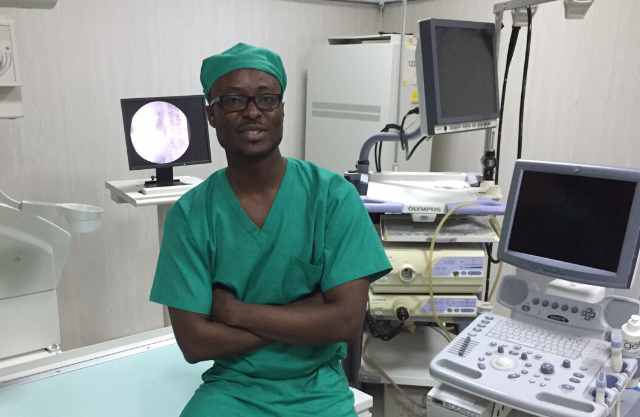Published
6 years agoon

He said aneurysm, which is on a steady rise in the country, could be better managed or treated if the condition was detected at an early stage.
“There is very little one can do to stop the occurrence of brain aneurysm, and that is why we recommend regular checks to enable the condition to be diagnosed at a stage which is not fatal or too difficult and expensive to treat,” he said.
Dr Sarkodie indicated that the latest survey conducted in Ghana in 2018 pitched the prevalence rate of the condition at six per cent, implying that six out of every 100 Ghanaians had the condition.
He explained that the condition occurred when a blood vessel in the brain wore out due to constant flow of blood, causing a bulge like a bubble that often ruptured, making it very fatal, as it could lead to clots in the brain.
“The more the bleeding, the more likely the bulge would increase in size and the higher the chances of a rupture,” Dr Sarkodie told the Daily Graphic in an interview, adding that the condition was very fatal because it did not present symptoms until it had got to an emergency stage.
According to him, three out of every five persons who had a ruptured aneurysm died within two weeks, while half of those who survived were left with severe brain damage and disability.
He said although Ghana had the capacity to deal with the condition, the cost of treatment was high, coupled with the high rate of inconvenience.
New technology surgery
Last year, Dr Sarkodie led a seven-member team of Ghanaian doctors to perform the first brain surgery to repair aneurysm without cutting the patient’s skull, a procedure known as minimally invasive surgery.
Since the historic feat, the team has carried out nine more similar processes.
The technology, also known as brain aneurysm coiling, is a technique by which health workers pass a tube (catheter) through the groin up into the artery containing the brain aneurysm to perform the surgery, while preventing rupture.
The technique allows surgery to be successfully done without causing injury or other damage on unintended targets such as blood vessels and nerves.
The two-hour surgery was performed with modern equipment and computer software at the Euracare Advanced Diagnostic and Heart Centre, a private health facility in Accra.
The other doctors were from the Stroke Unit of the Korle Bu Teaching Hospital and Euracare.
Brain aneurysm
Explaining the health condition further, Dr Sarkodie said brain aneurysm, also known as cerebral aneurysm, is a bulging, weakened area in the wall of an artery in the brain, resulting in abnormal widening, ballooning or blistering.
He said if the blood flow was not stopped, the bulge increased until it ruptured, and once that happened, the chances of surviving were very slim.
Dr Sarkodie explained that because there was a weakened spot in the aneurysmal wall, there was the risk of a sudden burst.
He said the condition could lead to reduced blood flow to the brain, too much spinal fluid in the brain, a coma, permanent brain damage and death.
About 90 per cent of the cases, he said, presented without any symptoms, as the blood vessels that caused it were very small in size, adding that smaller aneurysms might have a lower risk of rupture.
He stressed that “the presence of the brain is the only risk factor for aneurysm and it could affect men and women of all ages”.
Source: graphic.com.gh
